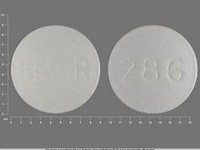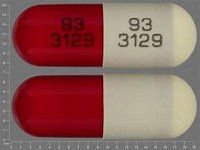Dalteparin sodium

Dalteparin sodium
CLINICAL USE
Peri- and postoperative surgical and medical thromboprophylaxis Prevention of clotting in extracorporeal circuits Treatment of DVT Acute coronary syndrome DOSE IN NORMAL RENAL FUNCTION
Dose according to risk of thrombosis: Moderate risk: 2500 IU daily —High risk and medical: 5000 IU daily Dose for >4 hour session: IV bolus of 30–40 IU/kg, followed by infusion of 10–15 IU/kg/hourDose for <4 hour session: as above or —single IV bolus injection of 5000 IUIf at increased risk of bleeding: IV —bolus of 5–10 IU/kg, followed by infusion of 4–5 IU/kg/hour200 IU/kg daily (maximum 18 000 units as a single dose) or 100 IU/kg twice daily120 IU/kg every 12 hours maximum 10 000 IU twice daily for 5–8 days PHARMACOKINETICS
Molecular weight :Average 6000 %Protein binding :No data %Excreted unchanged in urine : No data Volume of distribution (L/kg) :0.04–0.06half-life – normal/ESRD (hrs) :IV: 2; SC: 3.5–4/Prolonged DOSE IN RENAL IMPAIRMENT
GFR (mL/MIN)
20 to 50 : Dose as in normal renal function 10 to 20 : Dose as in normal renal function only for prophylaxis doses. See ‘Other Information’ <10 : Dose as in normal renal function only for prophylaxis doses. See ‘Other Information’ DOSE IN PATIENTS UNDERGOING RENAL REPLACEMENT THERAPIES
CAPD :Not dialysed. Dose as in GFR <10 mL/min HD :Not dialysed. Dose as in GFR <10 mL/minHDF/high flux :Dialysed. Dose as in GFR <10 : mL/minCAV/VVHD :Not dialysed. Dose as in GFR=10–20 mL/min IMPORTANT DRUG INTERACTIONS
Potentially hazardous interactions with other drugsAnalgesics: increased risk of bleeding with NSAIDs, avoid concomitant use with IV diclofenac; increased risk of haemorrhage with ketorolac – avoid concomitant useNitrates: anticoagulant effect reduced by infusions of glyceryl trinitrateDrotrecogin alfa: manufacturer advises to avoid use of high doses of heparin with drotrecogin alfaUse with care in patients receiving oral anticoagulants, platelet aggregation inhibitors, aspirin or dextran ADMINISTRATION
Reconstition
– Route
SC injection into abdominal wall (pre- filled syringes)IV bolus/infusion (ampoules) Rate of Administration
–Comments
Dalteparin solution for injection (ampoules) is compatible with sodium chloride 0.9% and glucose 5% OTHER INFORMATION
Low molecular weight heparins are renally excreted and hence accumulate in severe renal impairment. While the doses recommended for prophylaxis against DVT and prevention of thrombus formation in extracorporeal circuits are well tolerated in patients with ERF, the doses recommended for treatment of DVT and PE have been associated with severe, sometimes fatal, bleeding episodes in such dalteparin sodium (LMWh)patients. Hence the use of unfractionated heparin would be preferable in these instancesIn patients with GFR ≤ 30 mL/ min, monitoring for anti-Xa levels is recommended to determine the appropriate dalteparin dose. Target anti-Xa range is 0.5-1.5 IU/mWhen monitoring anti-Xa in these patients, sampling should be performed 4–6 hrs after dosing and only after the patient has received 3–4 dosesAntifactor-Xa levels should be regularly monitored in new patients on haemodialysis, during the first weeks; later, less frequent monitoring is generally required. Consult manufacturer’s literatureAdditional doses may be required if using LMWHs for anticoagulation in HDFBleeding may occur especially at high doses corresponding with antifactor-Xa levels greater than 1.5 IU/mLThe prolongation of the APTT induced by dalteparin is fully neutralised by protamine, but the anti-Xa activity is only neutralised to about 25–50%1 mg of protamine inhibits the effect of 100 IU (antifactor-Xa) of dalteparinHeparin can suppress adrenal secretion of aldosterone leading to hypercalcaemia, particularly in patients with chronic renal impairment and diabetes mellitus
See how to identify renal failure stages according to GFR calculation
See how to diagnose irreversible renal disease
Home









